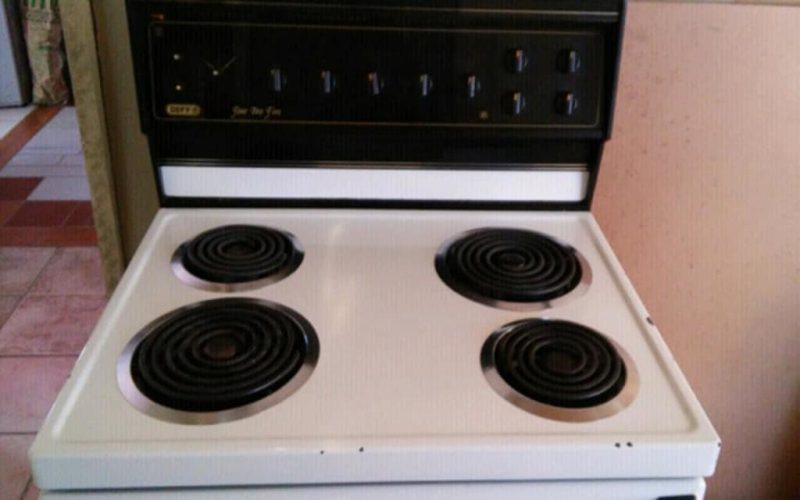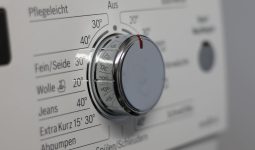Electric cookers are among the most common and most used household appliances worldwide.
They are simply cooking equipment that uses electricity by converting it to heat energy, which is utilized for cooking meals.
Usually, electric cookers consist of four stoves and about two ovens. The cooker has a set of knobs for each stove and the oven to regulate their temperature.
Electric cookers are very similar in appearance and build to gas cookers, but the major difference is that gas cylinders power gas cookers.
Different Types of Electric Cookers
The types of electric cookers that are commonly known and used include:
- Hot plates
- Rice cookers
- Slow cookers (Crock Pot)
- Electric kettles
- Toasters
Brief History of Electric Cookers
The first electric cooker models were unsatisfactory in the U.S.A. due to many factors, such as the high cost of electricity, poor temperature regulation, short lifespan of heating elements, and limited power supply from the electricity generating company.
With time, the issue of short durability of heating elements was solved with the invention of nichrome alloy to manufacture resistance wires.
From the early 19th century until the 1920s, electric cookers/stoves were considered novel kitchenware, and penetration into the consumer market was difficult.
However, this changed for the better barely a decade later, in the 1930s, when the acceptance of this novel kitchenware became higher due to two improvements in the invention.
This includes decreased electric power costs and a more modernized look/appearance of the kitchenware.
Electric cookers were also instrumental in the fight for increased demand for electric power supply.
They were used to demonstrate their cooking function with electric power during the rural electrification projects.
Different Types of Burners/Hobs in Electric Cookers
Ceramic Burners/Hobs
Ceramics jobs are primarily liked for their effectiveness, affordability, and style. Ceramic hobs are effective because they use electric heating elements underneath a glassy surface.
The heating begins when you set your knob to get the temperature you want for your hob/burner.
The heating elements heat the glassy surface, which heats your pot and cooks your food.
Ceramic hobs have attractive pros, such as being easy to install and possessing a sleek-looking glass surface, which adds to the aesthetic appeal of a modern kitchen. But everything with pros comes with its fair share of cons.
The cons of ceramic hobs are that the glass surface is breakable and less responsive than gas and induction hobs.
Air Venting Induction Hobs/Burners
This type of burner is a hybrid of induction burners and cooker hoods. This burner has an air vent that serves two primary purposes: Ducted extraction, which is the venting of air outside, and Recirculation, which is the venting of clean air back into the room.
The pro of this burner is that the location of the air vent, which is on the burner instead of above it, makes removing grease and moisture while cleaning easier.
Induction Hobs/Burners
Induction hobs are fairly novel and are not commonly seen in household kitchens like ceramic and gas hobs.
Induction hobs have a coil underneath their surface through which electric current passes. This current creates a fluctuating magnetic field responsible for heat transfer to the cooking pot placed on the hob’s surface.
Unlike other hobs, the induction hobs possess a unique feature: they don’t heat up until a cooking pot or something else is placed upon its surface.
Induction hobs possess attractive pros such as aesthetic appeal, cooking fast, and being safe to use.
Gas Hobs/Burners
Unlike other hobs, gas hobs can be used in any kitchen design or interior, whether modern or traditional.
It is a very functional burner because it quickly produces an evenly spread temperature across the surface of your cooking pot or pan.
The gas hob connects to the gas mains, so when you switch it on, an ignition point generates a spark that lights up the hob.
They are arguably the most popular hobs. They are fast and precise for cooking, and like others, they are also pleasing to the eye.
User Guide for Electric Cookers
- Before usage after purchase, make sure the installation of the appliance is carried out by a certified technician from the company you purchased the cooker from
- Also, ensure the Anti-tip brackets are installed at the bottom of the appliance to prevent it from tipping over.
- Make sure the ground upon which you want to place your appliance is even
Hob Usage and Maintenance
- The Indicator light for the hob is located on the appliance’s console. When the control knob is set to any temperature, the indicator light will glow. This indicator means that the hob has been switched on.
- There is also the hob surface indicator light. It glows to show that a certain area is too hot to touch. Sometimes, it glows even when the hob is turned off.
- Ensure all hobs are turned off after cooking.
- Ensure the hob is cleaned after each use to avoid permanent damage to the hob surface.
- Do not store heavy cans or jars on the hob to prevent cracking Its surface (for ceramic hobs)
- Do not leave the lid while it’s still hot on the hob
- Do not place or leave objects that can easily melt, such as plastics and aluminum foils, on the entire hob surface.
- Never use the hob’s surface as a chopping board.
- Ensure the size of the cookware used to cook meals does not extend beyond 1.3cm from the hob’s surface area. Use small cookware on small hobs and big cookware on big hobs.
- Ensure the bottoms of all cookware are dry and clean before cooking on the hob.
- To ensure even heating, it is advisable to use only cookware with flat bottoms. Cookware with uneven bottoms is not advisable.
- Avoid using plastic wraps to cover food cooking on the hob to prevent melting and subsequent damage.
Cleaning Tips for Electric Cookers
- Ensure all controls are off and the hob area has sufficiently cooled down before you clean.
- Your cleaning tools should be basically soap, water, a soft cloth, or a sponge.
- To clean porcelain enamel surfaces, a liquid cleaner and glass cleaner with a smooth-faced cleaning pad should be used, especially when cleaning the area with the model number or serial number area so that those digits won’t be scrubbed off
- Do not use scouring pads filled with soap or abrasive cleaners, hob Cleaner, steel wool pads, gritty washcloths, or abrasive paper towels to prevent damage to stainless steel surfaces. Even with limited use, the surfaces may be damaged.
- Do not use cleaning substances such as abrasive cleaners, bleach, rust removers, ammonia, or sodium hydroxide (lye) while cleaning metallic surfaces, as these may stain or damage the paint surface.
- For ceramic glass hobs, ensure you use hob cleaner and hob scraper to clean stains from the hob. While cleaning, always use a hob protectant regularly to avoid stain accumulation and scratching, and configure the hob for easier future cleaning.
- For scratches, use a hob cleaner and cleaning pad.
- To prevent damage to the hob controls, avoid using steel wool, abrasive cleansers, or oven cleaners.
- Do not soak knobs in water in order not to damage it
- Use just soap and water for cleaning. Remove the knobs from the control panel, clean and replace it back
- To clean the control panel and the exterior of the oven door, use a soft cloth or soft sponge and glass cleaner.
- While cleaning, do not apply the glass cleaner directly on the body of the appliance but on the soft cloth.
- To clean the interior of the oven doors, avoid using aggressive abrasive cleaners or metal scrapers to avoid glass-shattering
- Use a damp towel or cloth to clean the above part of the appliance.
- To clean oven racks, make use of a steel wool pad
- To clean the storage drawer, make use of a mild detergent
- To clean oven cavities, check the “self-cleaning” section
Troubleshooting Tips
It isn’t unusual for your electric cooker to develop issues that may prevent you from using it. Below are some easy ways to tackle potential faults.
If the Machine is Not Functioning
- Ensure your machine is plugged into an earthed wall socket
- Ensure the socket is switched on
- Check if the circuit breaker has tripped or is faulty if the fault isn’t from the socket. You can reset it or call an electrician.
- Check for electrical faults such as miswiring if the machine is plugged in but shows an F9 error code. If seen, notify an electrician.
Hob/Burner is Not Responding
- Check to see if the control knob is set correctly. If not, push the knob in before turning it to a setting.
Too Much Heat on Your Cookware
- The cause must be the size of your cookware
- Use the correct size of your cookware and ensure it doesn’t extend beyond 1.3cm off the hob’s surface.
Hob is Not Heating Up as Expected
- The cookware is not evenly placed on the hob. Ensure it is leveled on the hob’s surface.
- Check the heat level the knob is set to; if it’s at the incorrect heat level, rectify it.
- Consult your “hob use” section in the manual.
Oven Not Responding/ Similar Over Issues
- This could be because the “control lock” is on, “delay start” is set, the electronic oven control is incorrect, and the control is in demo mode.
- Press “start” and hold for 3 seconds to unlock the control lock.
- Press “start” and hold for 10 seconds if the control is in demo mode.
- Consult your user manual’s “cook time” section if the delay start is set.
- Reference your “electronic oven controls” if the electronic oven control is configured incorrectly.
- If the temperature of the oven is too high or too low, check the temperature control/knob and configure it to the desired temperature or consult the “oven temperature control” sub-section under the “electronic oven controls” section in your manual.
- If the oven indicator light keeps flashing, consult the “control display” subsection under the “electronic oven controls” section.
- If the oven displays messages such as flashing time (indicates power failure) or an error code(there is a fault), depending on the model of the cooker, you can either clear the clock or reset it
- To reset the clock, consult the “clock keypad” section under the “feature guide” section.
- If the oven displays a message such as “Push,” the start button must be pressed to begin a cycle.
- To rectify that, consult the “start keypad” in the “feature guide” section
Self-cleaning Issues
- If the cooker has issues with self-cleaning, it is likely due to 3 possible reasons: the oven door is still partly open, a timed cooking function has been entered, or the self-cleaning function has been programmed inaccurately.
- Ensure the oven door is fully shut if not properly closed
- If a timed cooking function has been entered, consult the “cook time” section in the manual
- If the self-cleaning function has been programmed inaccurately, consult the “self-cleaning cycle” section.
In conclusion, electric cookers are one of the most modern cooking technologies. It is advisable for the user, whether industrial or residential, to strictly adhere to the safety tips, care and maintenance tips, and troubleshooting tips to keep the appliance working in a consistent optimum condition.








